Seeing the Unseen: GFX Infrared for Museum Documentation
by Andika Devara Loeis
Jimbaran, 23 September 2025
Introduction
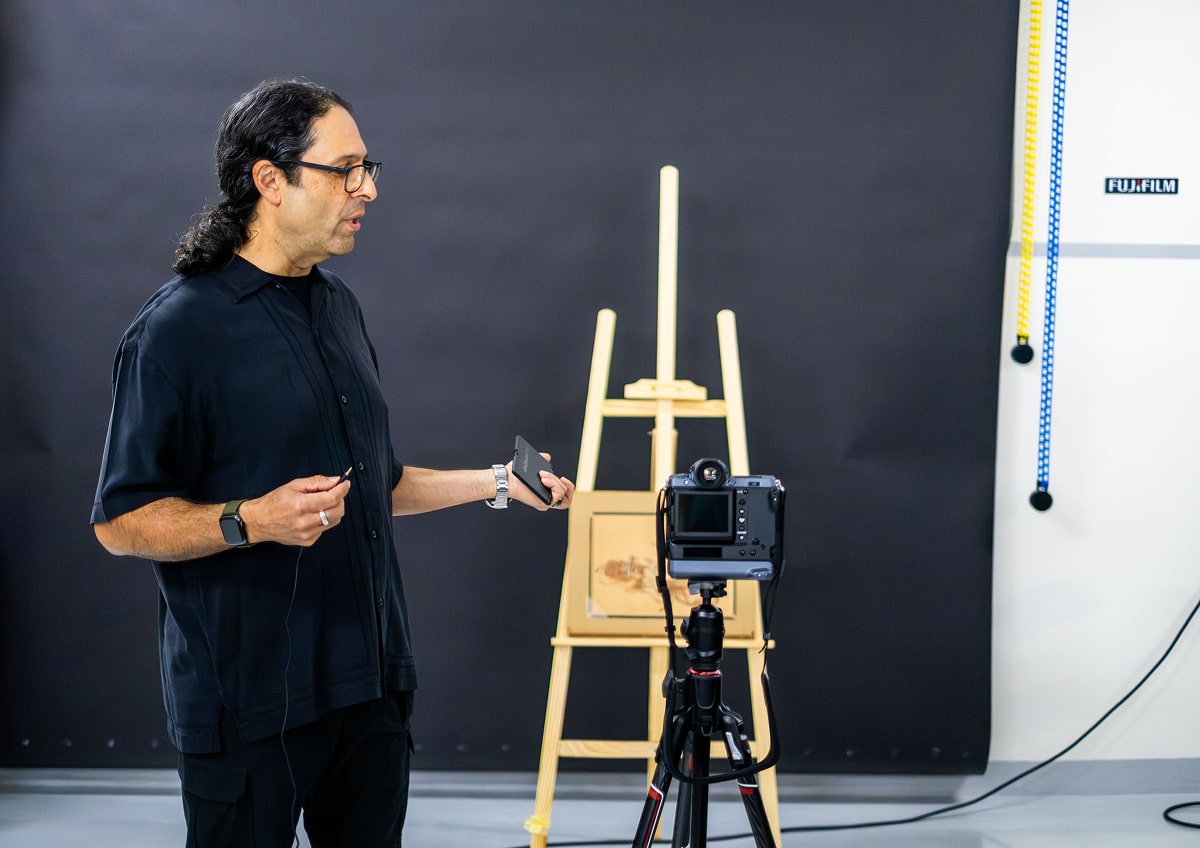
On 16 September 2025, SAKA Museum presented “Seeing the Unseen: GFX Infrared for Museum Documentation”, a workshop facilitated by Yosi Pozeilov, Managing Photographer and Imaging Specialist at the Los Angeles County Museum of Art (LACMA). The program introduced participants to the potential of Fujifilm’s GFX100 IR camera—an advanced tool that reveals hidden details invisible to the naked eye.
This workshop was part of SAKA Museum’s ongoing collaboration with Fujifilm Indonesia, highlighting how cutting-edge imaging technologies can support the documentation, analysis, and preservation of cultural heritage in Indonesia. By using IR imaging, conservators and museum professionals can trace underdrawings, discover hidden sketches, and understand restoration histories, offering new insights into the creative process behind artworks.
With over two decades of experience in conservation imaging, Yosi Pozeilov has been at the forefront of integrating digital and computational imaging technologies into museum practice. Since joining LACMA in 2003, he has overseen the transition from film to a fully digital workflow and introduced advanced techniques such as Reflectance Transformation Imaging (RTI), photogrammetry, broadband and spectral imaging. He has also developed protocols for image-based condition reporting using mobile and tablet systems, setting new standards in conservation documentation. Beyond his technical expertise, Pozeilov is an active educator, having taught workshops for the American Institute of Conservation (AIC), the UCLA/Getty Conservation Program, and numerous other institutions worldwide.
By sharing both technical knowledge and practical demonstrations, Pozeilov emphasized how IR imaging extends the possibilities of technical art examination, empowering museums to deepen their stewardship of cultural memory
Presentation
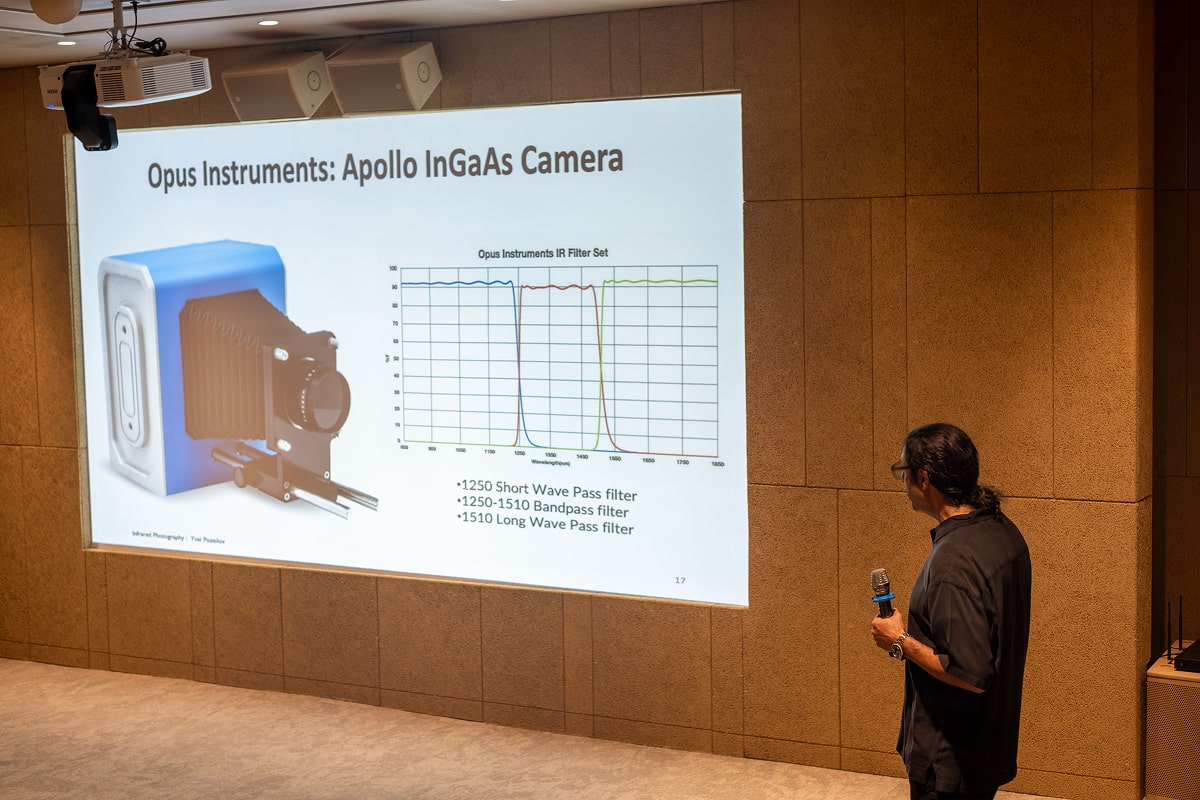
The workshop welcomed participants from Balai Pelestarian Kebudayaan Wilayah XV, Dinas Kebudayaan Provinsi Bali, Bali Museum, Neka Art Museum, Pasifika Museum, Le Mayeur Museum, the Indonesian Heritage Agency (IHA), and students from Udayana University. For many of them, this was the first time learning how infrared (IR) imaging could be used in museums to uncover hidden stories in artworks.
In his presentation, Yosi Pozeilov introduced the basics of infrared photography. He explained that infrared light is something our eyes cannot see, but with the right camera, it becomes a powerful tool to look beneath the surface of a painting. Using Fujifilm’s GFX100 IR camera, along with special filters and controlled lighting, he showed how this technology allows conservators to “see through” paint layers.
Pozeilov shared simple examples that made the science easy to grasp. For instance, he demonstrated how adjusting the camera with an IR filter can reveal an artist’s underdrawing—sketches made before the final paint was applied. He also showed how using a different setup can highlight pigments like Egyptian Blue, which glow under infrared light even if they are invisible in normal lighting.
The audience saw striking before-and-after comparisons: a painting in visible light that appeared finished and complete, and the same painting in infrared, showing hidden figures, erased outlines, or areas of retouching. These discoveries not only reveal how an artwork was created, but also help museums make better decisions about conservation.
By the end of the session, participants were excited about the potential of this technology in Balinese museums and collections—imagining how it could be used to study local paintings, document heritage objects, and preserve them for the future.
Demonstration
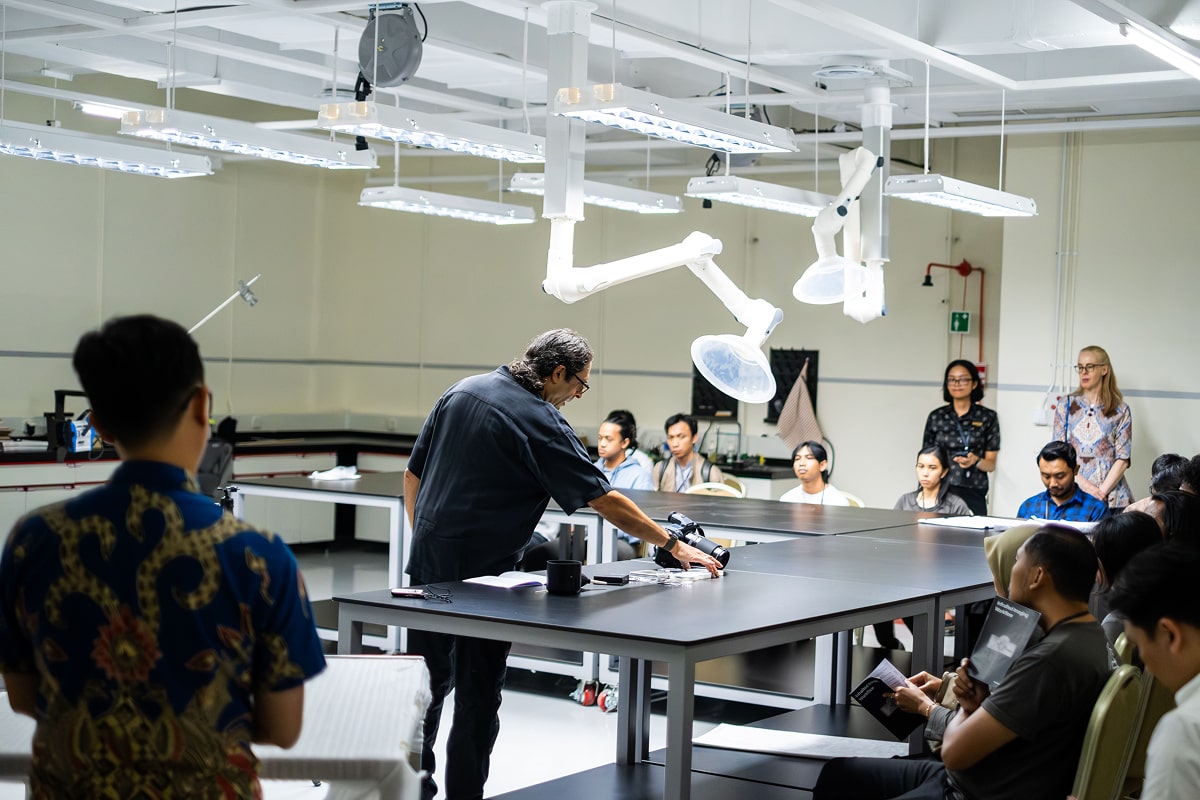
After the presentation, participants gathered at the SAKA Museum Conservation Laboratory to see how infrared imaging is carried out in practice. The lab was set up with the essential equipment: the Fujifilm GFX100 IR camera, specialized visible and IR filters, and halogen radiation sources carefully positioned to illuminate the paintings. A computer station completed the setup, running the software used to process and reveal the infrared images.
To begin, Yosi Pozeilov demonstrated the process by photographing one of SAKA Museum’s own collection pieces. Participants observed as he adjusted the camera on a tripod, placed the filters over the lens, and directed the halogen lights at the artwork from both sides to ensure even illumination. Once the image was captured, Yosi transferred it to the computer and walked everyone through the processing steps. Within minutes, layers hidden to the naked eye began to appear on the screen, such as faint underdrawings, subtle changes in brushstrokes, and traces of pigments not visible in normal light.
The demonstration became even more engaging when Neka Art Museum and Le Mayeur Museum provided one of their own paintings for analysis. With great interest, participants watched the same process applied to the Neka piece, and were able to compare the visible-light photograph with the infrared result. The contrast between the two images revealed hidden details, opening a new dimension for understanding the painting’s history and condition.
“The workshop was very interesting, especially since we rarely get to see how museum collections are documented. Using a special infrared camera to reveal the steps in a painting’s creation and the elements within it was truly eye-opening. What I found most exciting was the live demonstration of photographing a painting in the Conservation Lab at SAKA Museum, it was such a rare opportunity.” -Mega, Pasifika Museum
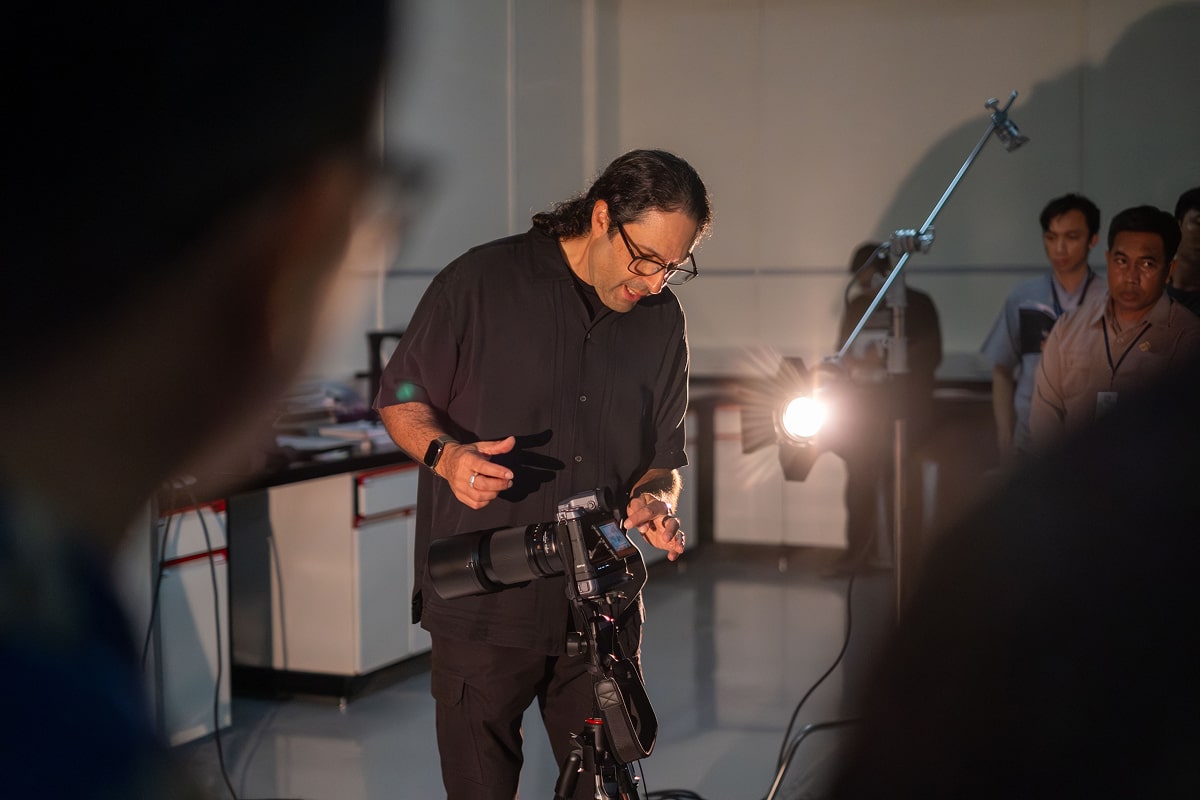
As part of the workshop’s collaborative spirit, the infrared images captured were promised to each respective museum for their own records and further study. This hands-on session not only showed the technical workflow of infrared imaging,from camera setup to digital processing, but also highlighted the practical benefits for museums in documenting and preserving their collections.
Reflection
The workshop concluded with a shared sense of discovery and possibility. For many participants, the sessions opened a new perspective on how technology can transform the way museums and cultural institutions care for their collections. By learning the fundamentals and witnessing the demonstrations firsthand, they saw that infrared imaging is not just a technical tool, but a gateway to uncovering hidden layers of history within artworks.
One of the key reflections was the accessibility of this technology. With the right equipment—such as the Fujifilm GFX100 IR camera, specialized filters, and proper lighting—museums now have the opportunity to conduct their own infrared studies. These techniques, once limited to large international institutions, are becoming available for collections in Indonesia, allowing local professionals to lead their own conservation research.
“My impression after joining the workshop is that I gained valuable new knowledge. With my background in archaeology, the topics presented are especially important as they can become part of preservation efforts. The direct demonstration made the workshop more interactive, allowing the audience to experience and better understand how the technical process works. I hope workshops with such specialized expertise will continue to be held, targeting stakeholders, academics, and the wider public.” — Yonas - Udayana University Student
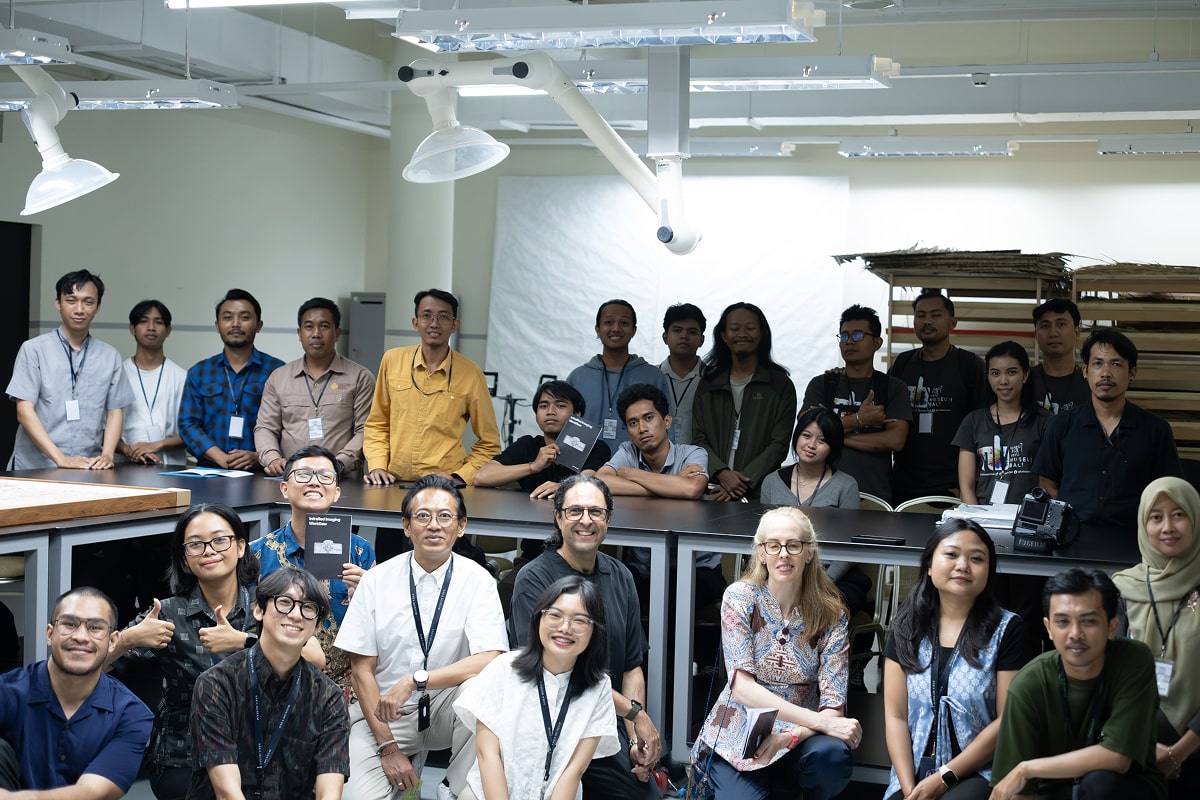
Equally important, the workshop encouraged a spirit of collaboration. Not every museum may have the resources to acquire dedicated IR equipment, but the session emphasized that they need not work in isolation. Through partnerships, cultural institutions can collaborate and make use of shared facilities such as the SAKA Museum Conservation Laboratory. By working together, museums across Bali and Indonesia can access advanced tools, exchange knowledge, and strengthen their collective role in safeguarding cultural heritage.

